Electro-Optic Toffoli Logic Based on Hybrid Surface Plasmons
Abstract
1. Introduction
- (1).
- This paper proposes a hybrid electro-optic Toffoli logic unit by using hybrid silicon-based waveguide surface plasmon polariton technology, which reduces energy consumption and improves transmission rate;
- (2).
- Compared to all-optical devices, this paper proposes the use of an electro-optic hybrid mode, which utilizes the advantages of easy storage of electrical signals and parallel computing of optical signals;
- (3).
- This paper provides a detailed analysis of the electro-optical control rate, insertion loss, and extinction ratio of the designed hybrid electro-optical Toffoli logic unit.
2. Relevant Theories
3. Design and Functional Implementation of the Hybrid Electro-Optical Toffoli Logic Structures
4. Simulation and Performance Analysis
5. Discussion
6. Conclusions
Author Contributions
Funding
Institutional Review Board Statement
Informed Consent Statement
Data Availability Statement
Conflicts of Interest
References
- Zhou, H.; Zhao, C.; He, C.; Huang, L.; Man, T.; Wan, Y. Optical computing metasurfaces: Applications and advances. Nanophotonics 2024, 13, 419–441. [Google Scholar] [CrossRef] [PubMed]
- Farmakidis, N.; Dong, B.; Bhaskaran, H. Integrated photonic neuromorphic computing: Opportunities and challenges. Nat. Rev. Electr. Eng. 2024, 1, 358–373. [Google Scholar] [CrossRef]
- Ning, S.; Zhu, H.; Feng, C.; Gu, J.; Jiang, Z.; Ying, Z.; Midkiff, J.; Jain, S.; Hlaing, M.H.; Pan, D.Z.; et al. Photonic-electronic integrated circuits for high-performance computing and ai accelerators. J. Light. Technol. 2024, 42, 7834–7859. [Google Scholar] [CrossRef]
- Anderson, J.; Kayraklioglu, E.; Reza Imani, H.; Shen, C.; Miscuglio, M.; Sorger, V.J.; El-Ghazawi, T. Virtualizing a post-moore’s law analog mesh processor: The case of a photonic pde accelerator. ACM Trans. Embed. Comput. Syst. 2023, 22, 1–26. [Google Scholar] [CrossRef]
- Chao, C.S.; Wu, Z.Y.; Lee, Y.K.; Huang, P.W.; Chang, S.Y.; Tsai, S.Y.; Duh, J.G. Enhancing mechanical properties via the dual effect of Ni addition and temperature gradient for 5 μm Cu/Sn-3.0 Ag-0.5 Cu/Cu transient liquid phase bonding. Mater. Sci. Eng. A 2023, 870, 144863. [Google Scholar] [CrossRef]
- Mohammad, A.; Das, R.; Mahjabeen, F. Synergies and Challenges: Exploring the Intersection of Embedded Systems and Computer Architecture in the Era of Smart Technologies. Asian J. Mechatron. Electr. Eng. 2023, 2, 105–120. [Google Scholar]
- Ji, C.; Huang, H.; Wang, T.; Huang, Q. Recent advances and future trends in processing methods and characterization technologies of aluminum foam composite structures: A review. J. Manuf. Process. 2023, 93, 116–152. [Google Scholar] [CrossRef]
- Cao, W.; Bu, H.; Vinet, M.; Cao, M.; Takagi, S.; Hwang, S.; Ghani, T.; Banerjee, K. The future transistors. Nature 2023, 620, 501–515. [Google Scholar] [CrossRef] [PubMed]
- McMahon, P.L. The physics of optical computing. Nat. Rev. Phys. 2023, 5, 717–734. [Google Scholar] [CrossRef]
- Sankar Rao, D.G.; Fathima, M.S.; Manjula, P.; Swarnakar, S. Design and optimization of all-optical demultiplexer using photonic crystals for optical computing applications. J. Opt. Commun. 2024, 44, s197–s202. [Google Scholar] [CrossRef]
- Weaver, M.J.; Duivestein, P.; Bernasconi, A.C.; Scharmer, S.; Lemang, M.; Thiel, T.C.; Hijazi, F.; Hensen, B.; Gröblacher, S.; Stockill, R. An integrated microwave-to-optics interface for scalable quantum computing. Nat. Nanotechnol. 2024, 19, 166–172. [Google Scholar] [CrossRef] [PubMed]
- Li, C.; Li, M.; Wang, R.; Chen, Y.; Ren, X.; Yan, L.; Li, Q.; Gong, Q.; Li, Y. Dynamically encircling exceptional points for robust eigenstate generation and all-optical logic operations in a three-dimensional photonic chip. Phys. Rev. Res. 2024, 6, 013203. [Google Scholar] [CrossRef]
- Chen, Y.; Shen, C.; Li, Q.; Li, J.; Deng, X. Dual-Band All-Optical Logic Gates by Coherent Absorption in an Amorphous Silicon Graphene Metasurface. Nanomaterials 2024, 14, 335. [Google Scholar] [CrossRef]
- Kaur, S.; Singh, M.L.; Singh, M. Performance comparison of all-optical logic gates using electro-optic effect in MZI-based waveguide switch at 1.46 µm. J. Opt. Commun. 2024, 44, s231–s243. [Google Scholar] [CrossRef]
- Goswami, K.; Mondal, H.; Sen, M. Design of all optical logic half adder based on holes-in-slab photonic crystal. Opt. Quantum Electron. 2024, 56, 271. [Google Scholar] [CrossRef]
- Kotb, A.; Zoiros, K.E.; Chen, W. All-Optical XOR, AND, OR, NOT, NOR, NAND, and XNOR Logic Operations Based on M-Shaped Silicon Waveguides at 1.55 μm. Micromachines 2024, 15, 392. [Google Scholar] [CrossRef] [PubMed]
- Hassangholizadeh-Kashtiban, M.; Alipour-Banaei, H.; Tavakoli, M.B.; Sabbaghi-Nadooshan, R. Creation of a fast optical Toffoli gate based on photonic crystal nonlinear ring resonators. J. Comput. Electron. 2020, 19, 1281–1287. [Google Scholar] [CrossRef]
- Liu, Z.; Yang, X.; Han, W.; Yan, R.; Yan, T.; Wang, P. Design of an optical Toffoli gate for reversible logic operation using silicon photonic integrated circuits. In Proceedings of the Seventh Symposium on Novel Photoelectronic Detection Technology and Applications, Kunming, China, 5–7 November 2020; Volume 11763, pp. 985–997. [Google Scholar]
- Yu, R.L.; Li, J.; Chen, W.W.; Wang, P.J. Silicon-Based All-0ptical Fredkin Gate UsingCross-Phase Modulation Effect. Acta Opt. Sin. 2021, 41, 143–151. [Google Scholar]
- Li, M.; Li, C.; Chen, Y.; Feng, L.T.; Yan, L.; Zhang, Q.; Bao, J.; Liu, B.H.; Ren, X.F.; Wang, J.; et al. On-chip path encoded photonic quantum Toffoli gate. Photonics Res. 2022, 10, 1533–1542. [Google Scholar] [CrossRef]
- Wu, Q.; Qian, J.; Wang, Y.; Xing, L.; Wei, Z.; Gao, X.; Li, Y.; Liu, Z.; Liu, H.; Shu, H.; et al. Waveguide-integrated twisted bilayer graphene photodetectors. Nat. Commun. 2024, 15, 3688. [Google Scholar] [CrossRef]
- Bulgakov, E.N.; Maksimov, D.N.; Ershov, A.E. Optical coupled-mode theory for dielectric solids of revolution. Phys. Rev. A 2023, 107, 043506. [Google Scholar] [CrossRef]
- Chen, C.; Chen, Y.; Fang, Z.; Ge, R.; Wu, J.; Chen, X. Hybrid material integration for active photonic applications. APL Photonics 2024, 9, 030903. [Google Scholar] [CrossRef]
- Liang, Z.; Shi, Y.; Wu, Q.; Yi, Y.; Fan, Y.; Tang, P. An electro-optic half subtractor from a silicon-based hybrid surface plasmon polariton waveguide. Open Phys. 2024, 22, 20240045. [Google Scholar] [CrossRef]
- Li, W.; Cheng, S.; Yi, Z.; Zhang, H.; Song, Q.; Hao, Z.; Sun, T.; Wu, P.; Zeng, Q.; Raza, R. Advanced optical reinforcement materials based on three-dimensional four-way weaving structure and metasurface technology. Appl. Phys. Lett. 2025, 126, 033503. [Google Scholar] [CrossRef]
- Zhixun, L.; Yunying, S.; Yunfeil, Y.; Yuanyuan, F.; Lvqing, B. Electro-Optic Hybrid Logic Gate Derived from a Silicon-Based Hybrid Surface Plasmon Polariton Waveguide. J. Nanoelectron. Optoelectron. 2022, 17, 298–304. [Google Scholar] [CrossRef]
- Tannaz, S.; Moradkhani, M.; Taherzade, M.; Rezaei, M.H. Ultracompact, high-extinction ratio XOR, OR, and Feynman logic gates based on plasmonic metal-insulator-metal directional couplers. Appl. Opt. 2023, 62, 644–653. [Google Scholar] [CrossRef]
- Ai, Z.; Yang, H.; Liu, M.; Cheng, S.; Wang, J.; Tang, C.; Gao, F.; Li, B. Phase-Transition-Enabled Dual-Band Camouflage in VO2/Ag Multilayered Nanostructures. Phys. E Low-Dimens. Syst. Nanostruct. 2025, 173, 116327. [Google Scholar] [CrossRef]
- Liang, Z.; Shi, Y.; Yi, Y.; Wei, Z.; Tang, P. Research on Electro-Optic Hybrid Multidigit Digital Multiplier Based on Surface Plasmon Polariton Technology. Photonics 2024, 11, 785. [Google Scholar] [CrossRef]
- Wang, L.; Dong, Y.; Gao, S.; Chen, K.Y.; Fang, F.C.; Jin, G.Y. Research progress of perovskite materials in the field of lasers. China Opt. 2019, 12, 993–1014. [Google Scholar] [CrossRef]
- Kocakulah, G. Comparison of electro-optical and dielectric properties of cobalt (II) phthalocyanine doped cholesteric liquid crystals. Opt. Mater. 2023, 141, 113949. [Google Scholar] [CrossRef]
- Ai, Z.; Liu, H.; Cheng, S.; Zhang, H.; Yi, Z.; Zeng, Q.; Wu, P.; Zhang, J.; Tang, C.; Hao, Z. Four peak and high angle tilted insensitive surface plasmon resonance graphene absorber based on circular etching square window. J. Phys. D Appl. Phys. 2025, 58, 185305. [Google Scholar] [CrossRef]


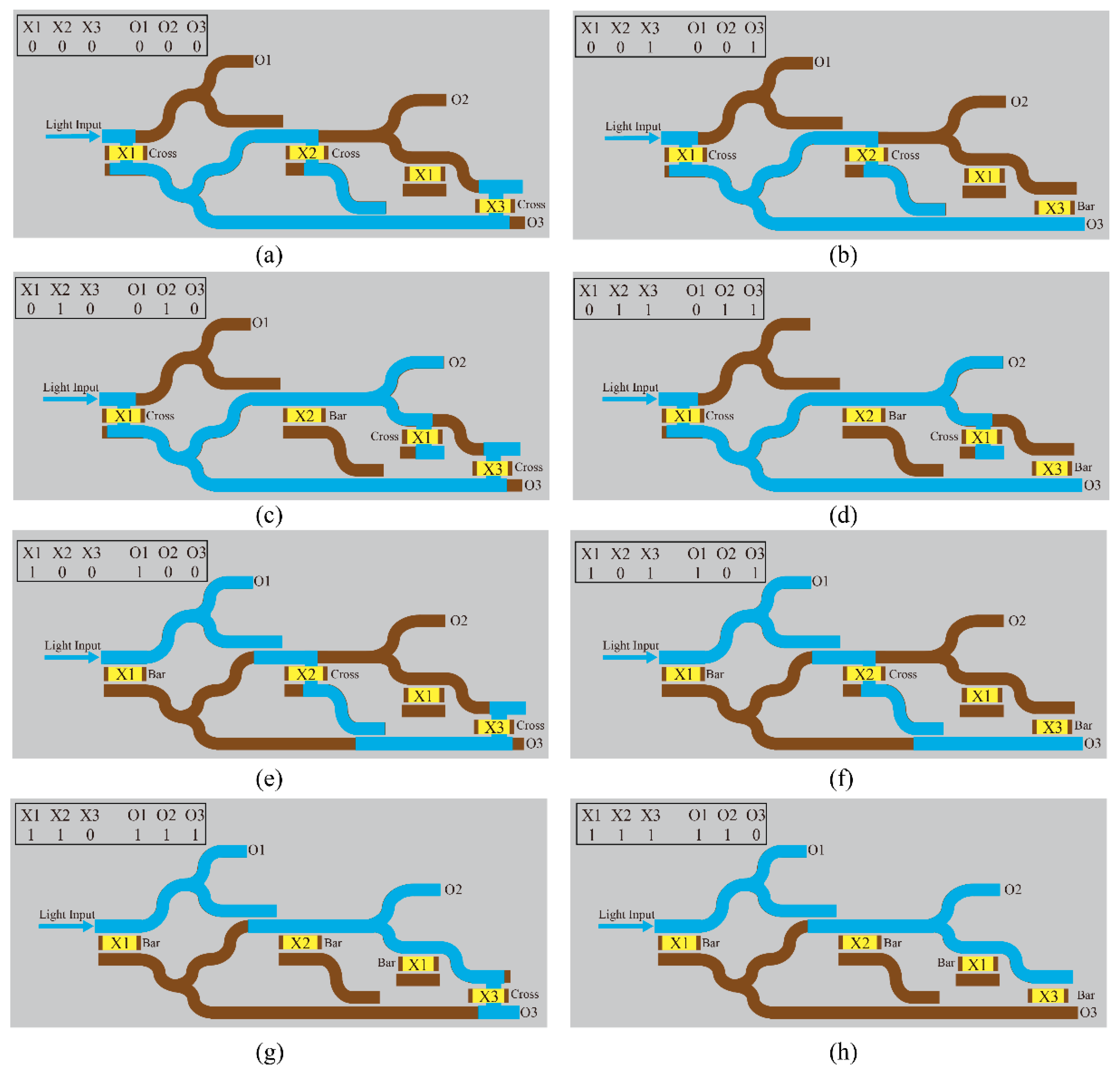
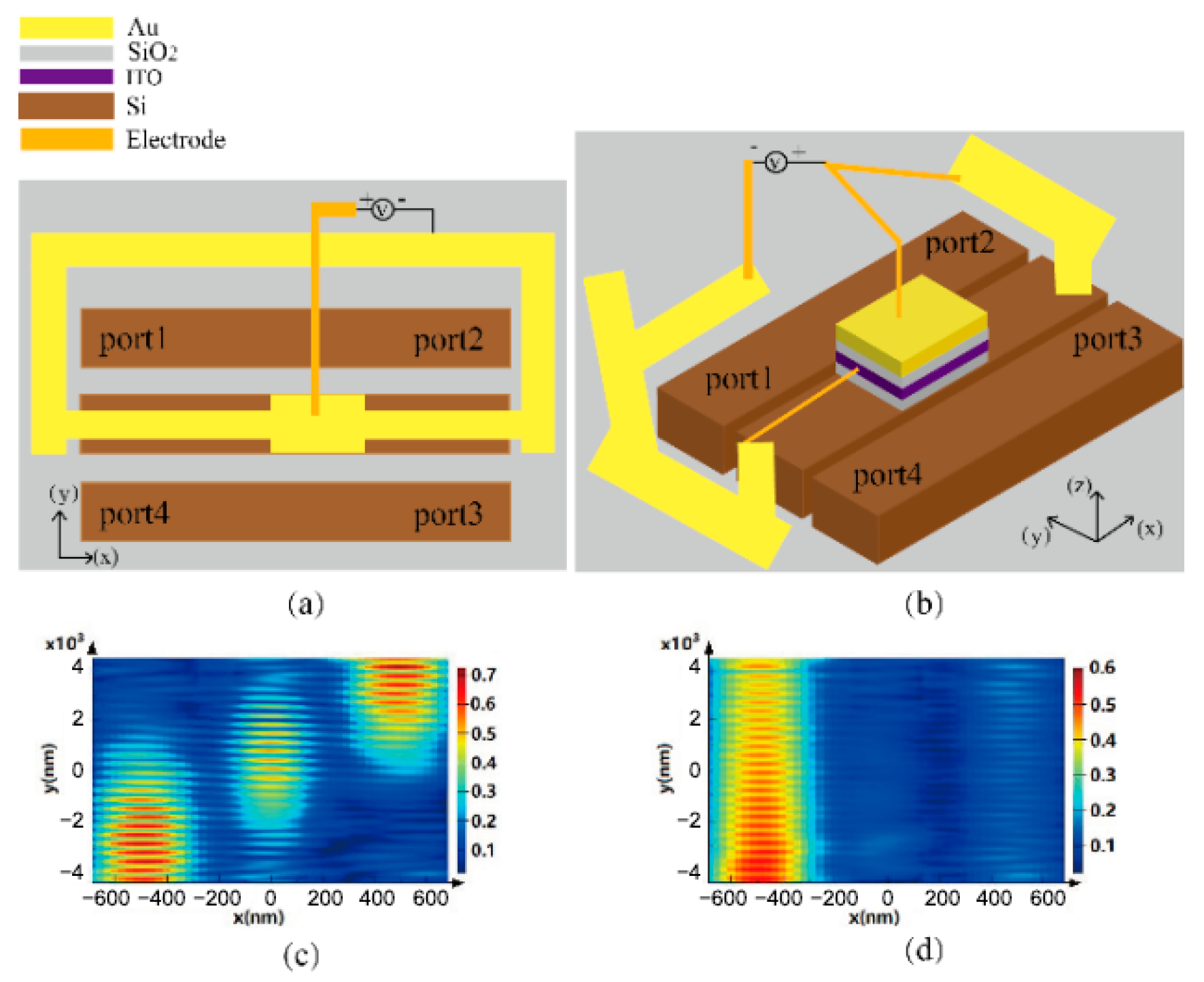
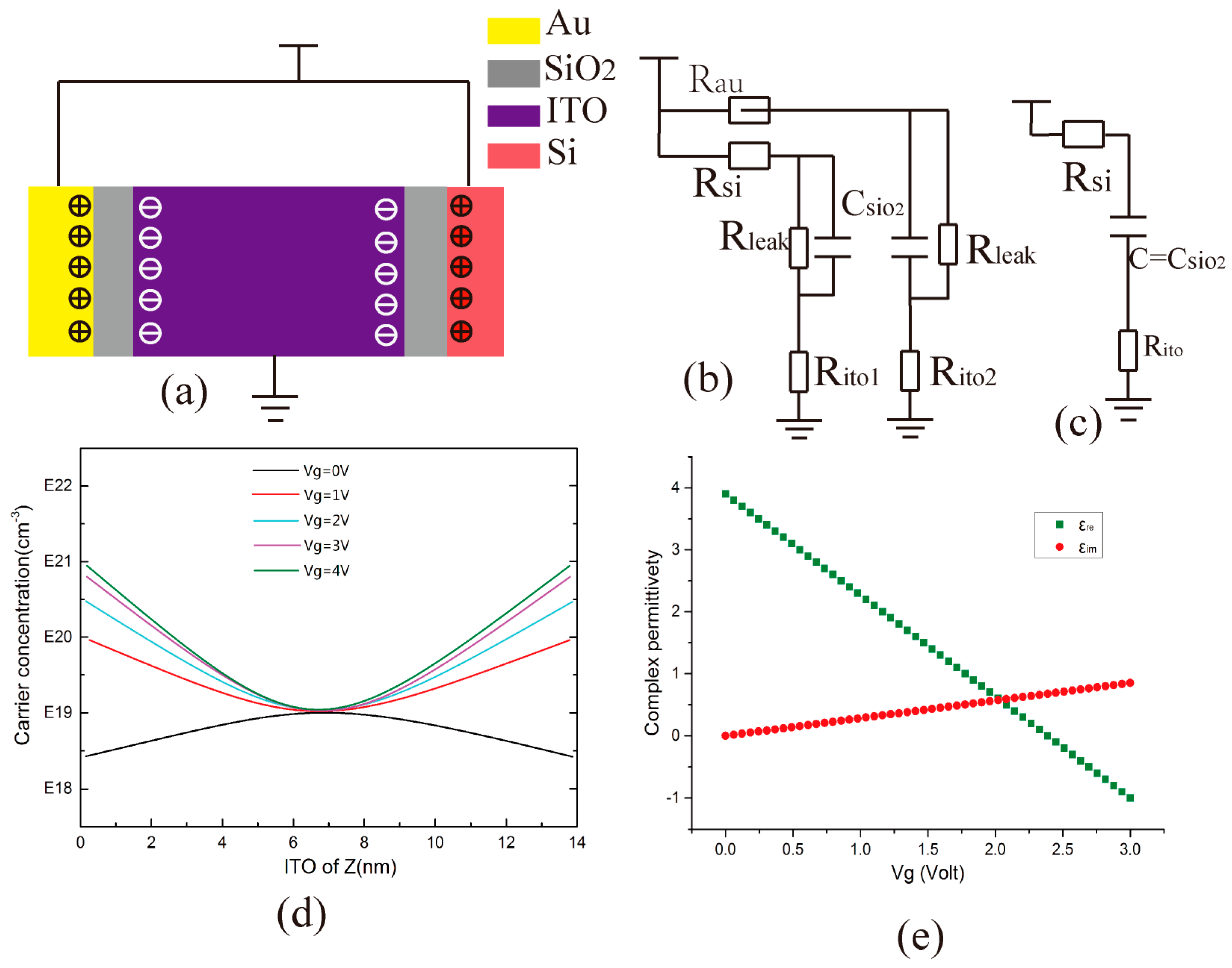
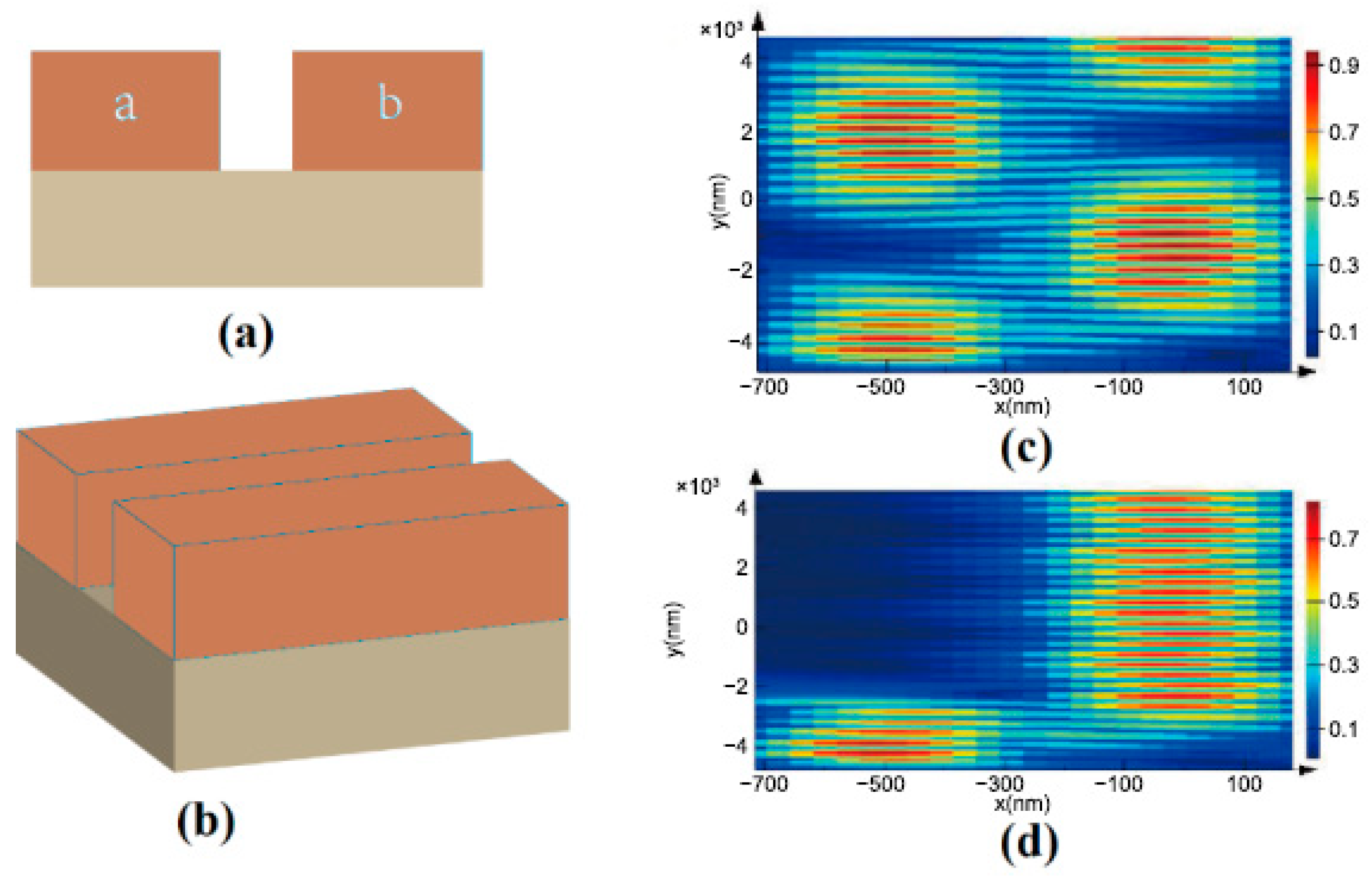

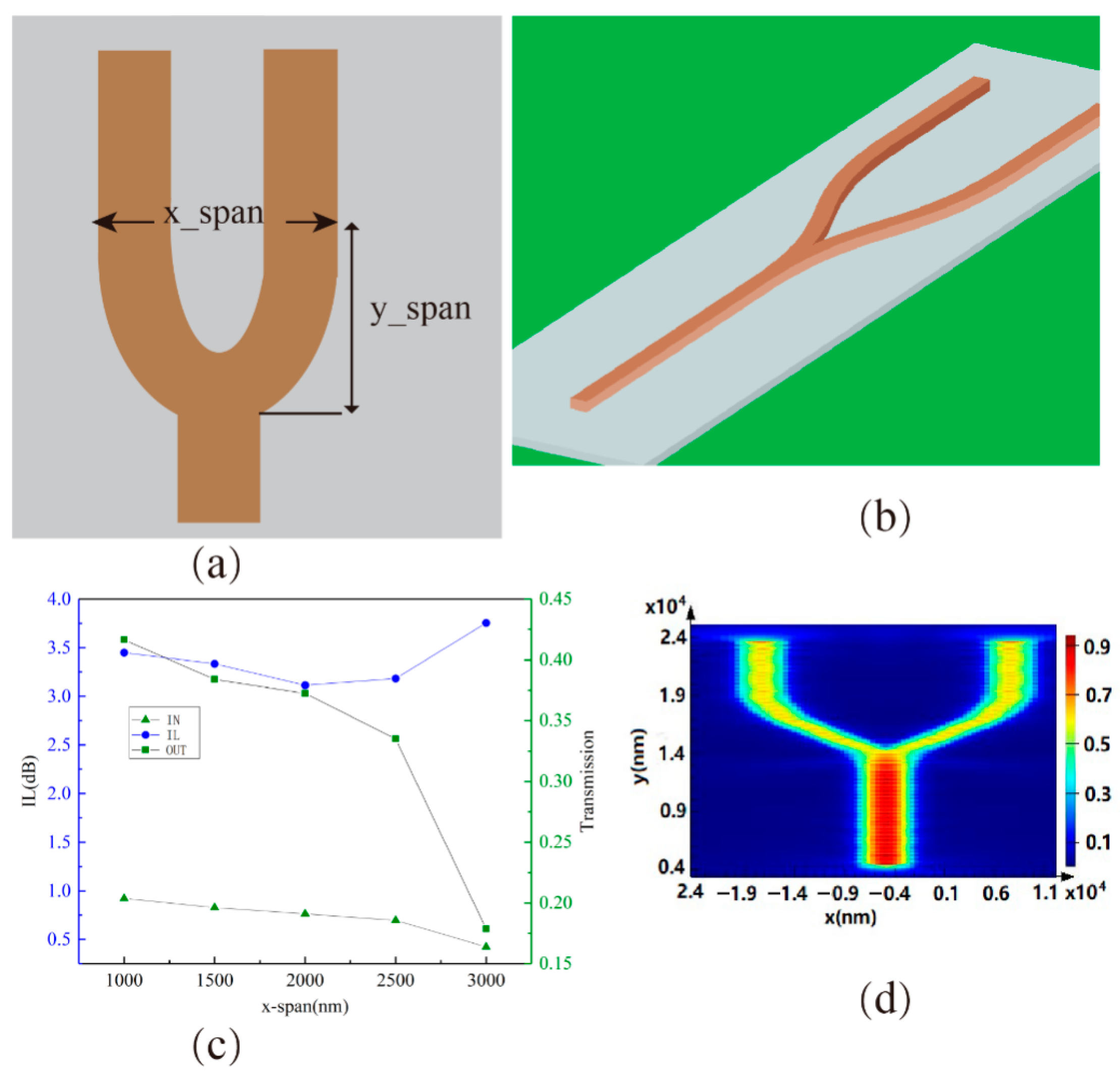
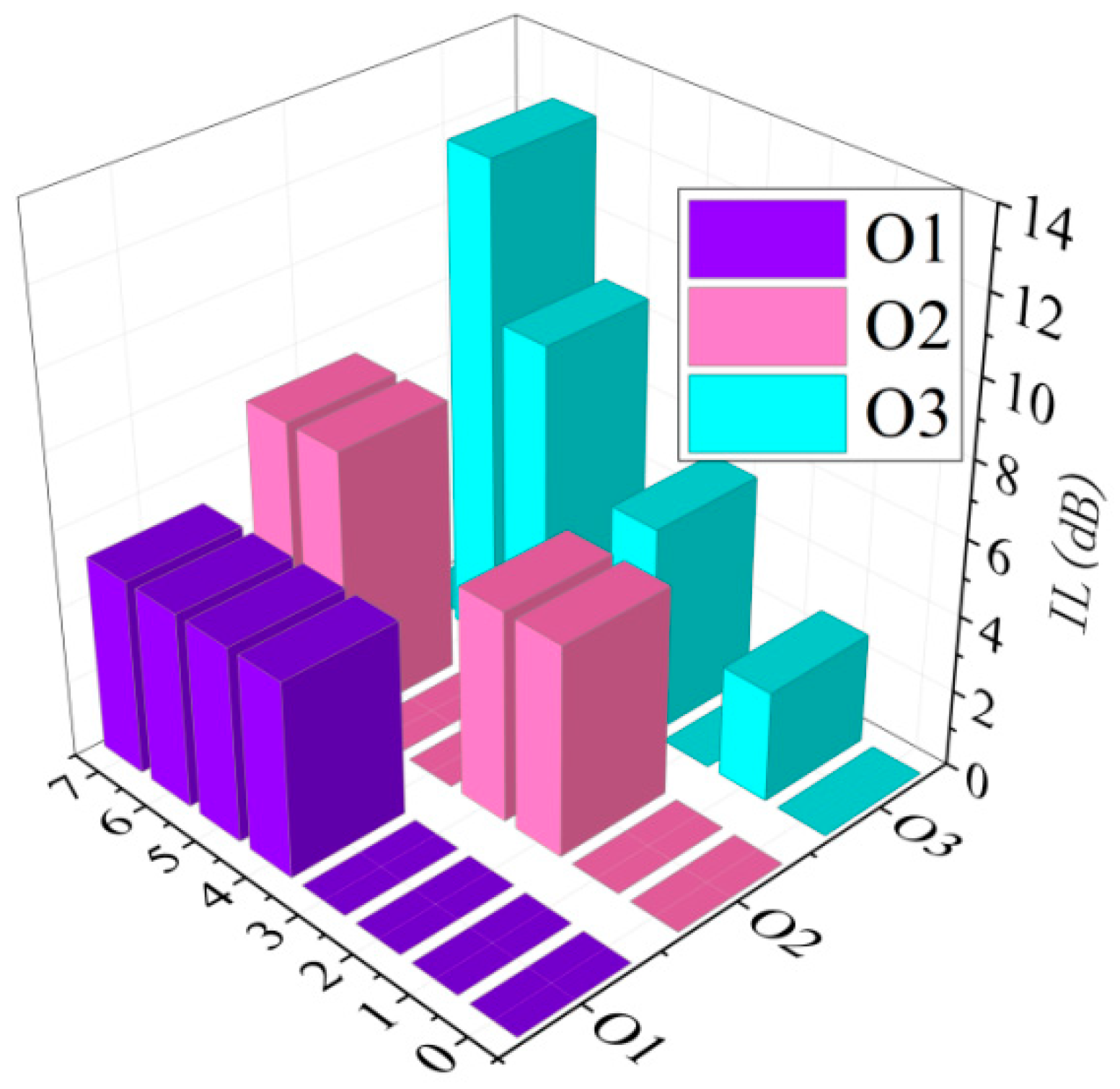
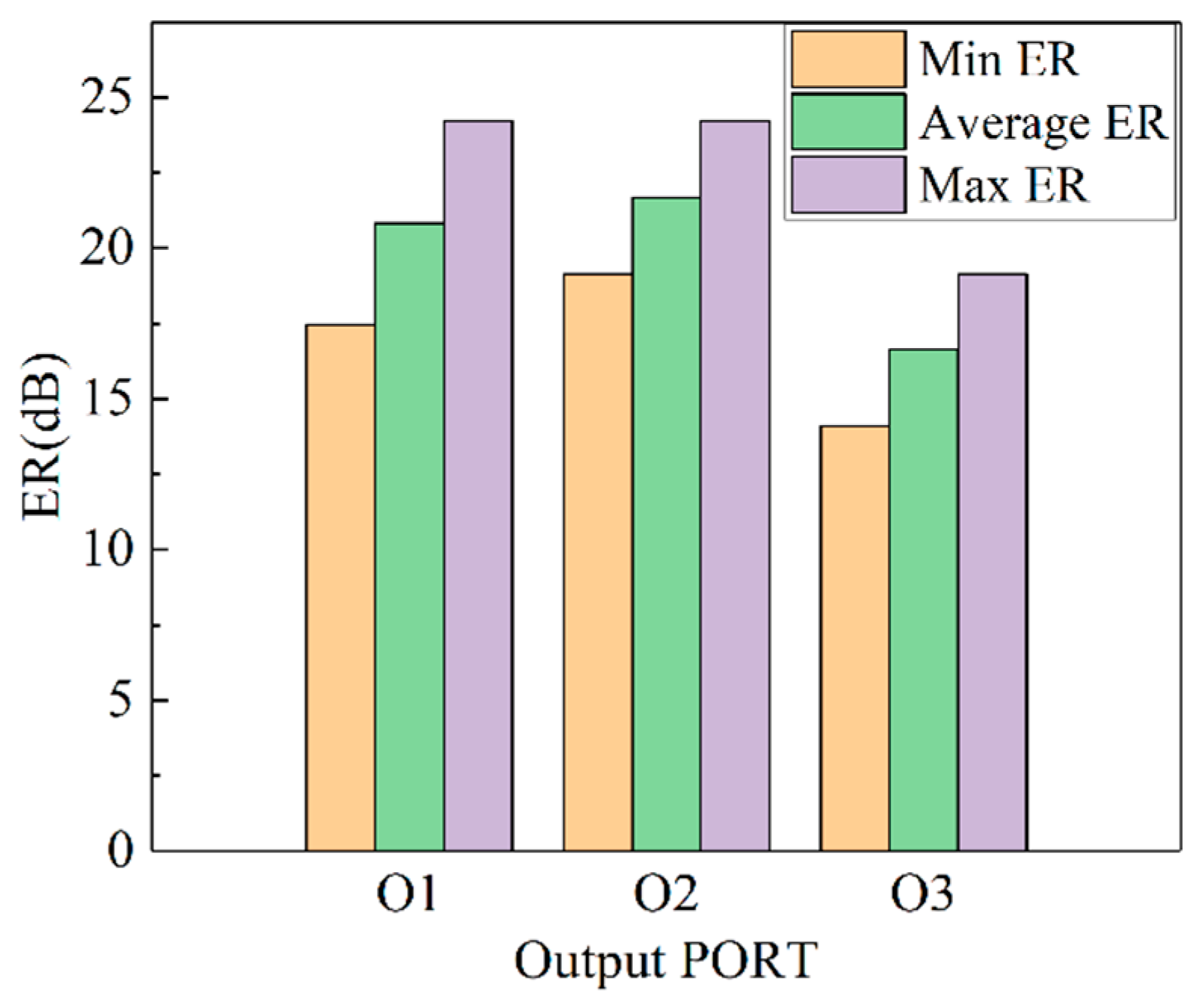
Disclaimer/Publisher’s Note: The statements, opinions and data contained in all publications are solely those of the individual author(s) and contributor(s) and not of MDPI and/or the editor(s). MDPI and/or the editor(s) disclaim responsibility for any injury to people or property resulting from any ideas, methods, instructions or products referred to in the content. |
© 2025 by the authors. Licensee MDPI, Basel, Switzerland. This article is an open access article distributed under the terms and conditions of the Creative Commons Attribution (CC BY) license (https://creativecommons.org/licenses/by/4.0/).
Share and Cite
Liang, Z.; Shi, Y.; Yi, Y.; Fan, Y. Electro-Optic Toffoli Logic Based on Hybrid Surface Plasmons. Photonics 2025, 12, 805. https://doi.org/10.3390/photonics12080805
Liang Z, Shi Y, Yi Y, Fan Y. Electro-Optic Toffoli Logic Based on Hybrid Surface Plasmons. Photonics. 2025; 12(8):805. https://doi.org/10.3390/photonics12080805
Chicago/Turabian StyleLiang, Zhixun, Yunying Shi, Yunfei Yi, and Yuanyuan Fan. 2025. "Electro-Optic Toffoli Logic Based on Hybrid Surface Plasmons" Photonics 12, no. 8: 805. https://doi.org/10.3390/photonics12080805
APA StyleLiang, Z., Shi, Y., Yi, Y., & Fan, Y. (2025). Electro-Optic Toffoli Logic Based on Hybrid Surface Plasmons. Photonics, 12(8), 805. https://doi.org/10.3390/photonics12080805




